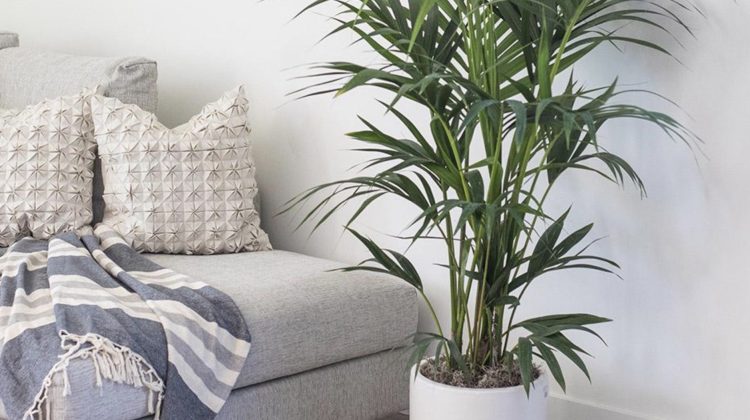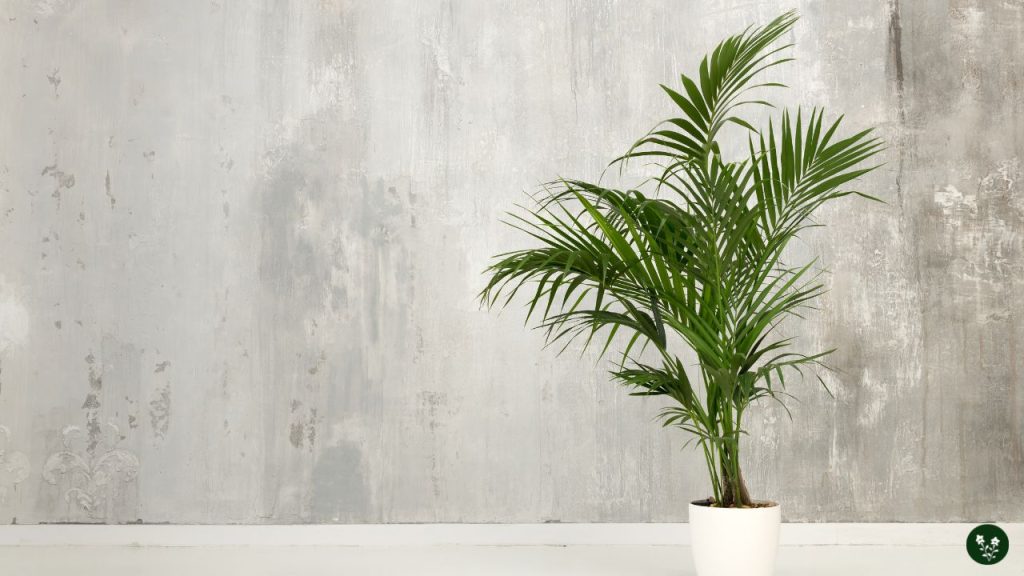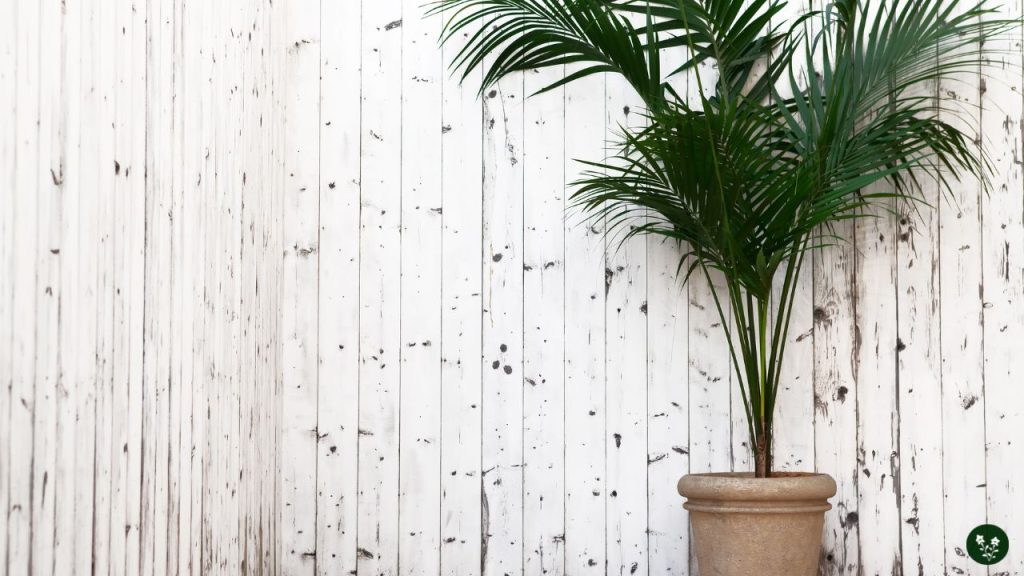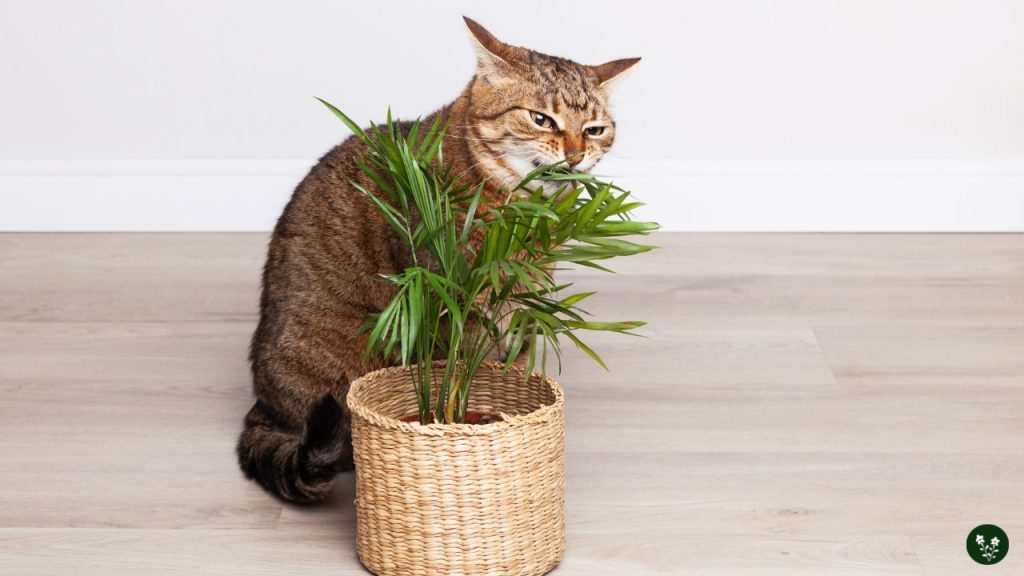
Kentia Palm, also known as Howea forsteriana, is a majestic palm tree native to Lord Howe Island in Australia.
It is a slow-growing palm that can eventually reach up to 40 feet high in its natural habitat, but it usually grows up to 6-8 feet tall when grown indoors.
This palm tree is a popular houseplant due to its elegant and graceful appearance, and it is also widely grown on Norfolk Island.
Kentia Palm is a low-maintenance plant that is easy to care for, making it an ideal choice for beginners.
It can adapt to various soil mixtures, such as sandy, clay, and loamy, while enduring bright, indirect light.
Watering the Palm weekly during the spring and summer seasons and reducing watering in autumn and winter is recommended.
Feeding with a liquid feed once a month in spring and summer is also advised to keep the plant healthy and thriving.
In this article, we'll cover
1. About Kentia Palm

The Kentia Palm, also known as Howea forsteriana, is a popular indoor and outdoor palm tree due to its elegant appearance and low maintenance requirements.
It is native to Lord Howe Island in the South Pacific and is known for its durability and adaptability to various soil conditions.
Appearance
The Kentia Palm has a slender trunk that can reach up to 40 feet in height in its natural habitat. However, when grown indoors or in containers, it typically reaches a height of 6-12 feet.
The fronds of the Kentia Palm are feather-shaped and can grow up to 10 feet long. They are a deep green and have a glossy texture that adds to the plant’s elegant appearance.
Habitat
The Kentia Palm is native to Lord Howe Island, a small island in the South Pacific.
The plant grows in the island’s subtropical climate, characterized by mild temperatures, high humidity, and consistent rainfall.
The plant can also thrive in other subtropical and tropical regions worldwide, including Florida, Hawaii, and parts of Europe.
Growth
The Kentia Palm is a slow-growing plant that can take several years to reach its full height. It can adapt to various soil conditions, including sandy, clay, and loamy soils.
The plant prefers bright, indirect light and can tolerate temperatures between 65-85 degrees Fahrenheit.
It requires regular watering during the spring and summer months but should be watered less frequently in the winter.
Fertilizing the plant monthly with a fertilizer with an NPK ratio of 3:1:2 can help promote healthy growth.
2. Kentia Palm Care

Watering
Kentia palms are fairly drought tolerant but do not like being overly dry or overly wet. Water your Kentia palm when the top inch of soil is dry.
Water thoroughly and allow the excess water to drain out of the pot. Do not let the plant sit in standing water, which can lead to root rot.
Lighting
Kentia palms do best in bright, indirect light but will tolerate a bit of shade. Avoid direct sunlight, as this will scorch the leaves.
If your Kentia palm is not receiving enough light, the leaves may turn yellow or brown. Move the plant to a brighter location, but avoid sudden changes in light levels.
Fertilizing
Use an organic palm fertilizer blend applied at the recommended strength every 2-3 months during the growing season, which is spring and summer.
Avoid fertilizing during the winter months when the plant is dormant. Over-fertilizing can lead to salt buildup in the soil, which can harm the plant.
Pruning
Prune any dead or yellowing leaves as soon as possible to prevent the spread of the disease. Use clean, sharp pruning shears to make a clean cut.
Do not remove more than one-third of the plant’s foliage at once, as this can stress the plant.
Kentia palms do not require regular pruning, but you can remove any brown tips on the leaves for aesthetic purposes.
3. Kentia Palm Propagation

Propagating Kentia palms is more challenging than many other indoor and garden plants.
Since new leaves only grow out of the top of the trunk, it’s impossible to propagate the plant by taking cuttings.
However, a few methods can still be used to propagate Kentia palms.
The most common method of propagation is by dividing the plant. When you repot the plant in the spring, you may find that a stem at the edge comes away with its roots.
This item can be potted up to create a new plant. Ensure the new plant has enough soil and water to grow strong roots.
Another method of propagation is by seed. Remove fruits from the palm to propagate Kentia palms from seeds and soak them in warm water.
After several days, remove the seeds from the fruits and place them in a pot filled with a well-draining soil mix.
Keep the soil moist and in a warm, bright spot. Germination can take several months, so be patient.
It’s important to note that propagating Kentia palms can take time and patience. It takes a lot of work, but watching your new plant grow and thrive can be rewarding.
4. Kentia Palm Common Problems

Pests
Kentia Palms are generally pest-resistant but can occasionally attract spider mites, mealybugs, and scale insects.
Spider mites are tiny, spider-like creatures that feed on the plant’s sap, causing the yellowing and browning of leaves.
Mealybugs look like small, white, cottony masses and can cause stunted growth and leaf drop. Scale insects are small, brown, and can be found on the underside of leaves or the trunk.
They can cause yellowing and browning of leaves and produce a sticky substance called honeydew, which attracts ants.
Inspect your Kentia Palm regularly and remove any affected leaves or insects to prevent pests. You can also use insecticidal soap or neem oil to control pests.
Diseases
Kentia Palms are generally healthy plants but can be susceptible to root rot and fungal diseases. Root rot occurs when the soil is too moist or waterlogged, causing the roots to rot and the plant to wilt.
Fungal diseases can cause leaf spots, yellowing, and browning of leaves.
To prevent diseases, ensure your Kentia Palm is planted in well-draining soil and avoid overwatering.
If you notice any signs of disease, remove the affected leaves and treat the plant with a fungicide.
Overall, Kentia Palms are relatively easy to care for and are not prone to many problems as long as they are given the right growing conditions and care.
Conclusion
Kentia Palms are elegant and expensive indoor plants perfect for creating a tropical vibe in your home.
These plants are slow-growing and resilient, making them an ideal choice for those new to indoor gardening.
With proper care and attention, Kentia Palms can thrive for many years, adding beauty and elegance to any space.
When caring for your Kentia Palm, it is important to remember that these plants prefer indirect sunlight and well-draining soil.
They also require regular watering, but be careful not to over-water, as this can lead to root rot.
Fertilizing your Kentia Palm every few months can also help to promote healthy growth and vibrant foliage.
If you are looking for a low-maintenance indoor plant that is both beautiful and functional, a Kentia Palm is an excellent choice.
With its elegant fronds and tropical vibe, this plant will make a statement in any room. So why not add a touch of the tropics to your home with a beautiful Kentia Palm?
A white dust sometimes appears under the leaves and on the stems and can be removed fairly easily any information or suggestions would be appreciated